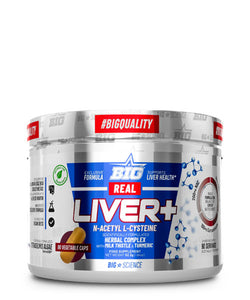
REAL LIVER +. CLEAN YOUR FILTER
Sergio Guerrero
INTRODUCTION
In this new Blog entry we will address in detail Real Liver+ , which, as shown in its description on the Web, is a supplement that contains n-acetylcysteine and other natural compounds such as milk thistle or turmeric, whose properties They range from addressing the regeneration and recovery of liver cells, to anti-inflammatory and antioxidant properties.

MECHANISM OF ACTION
NAC
N-acetylcysteine (NAC), as a nutritional supplement, is an antioxidant precursor to L-cysteine that results in elevated glutathione biosynthesis . Glutathione is a small protein composed of three amino acids: cysteine, glutamic acid and glycine that participates in the elimination of toxins from cells, the transport of vitamins and minerals, the regulation of the immune system and, above all, in antioxidant protection. . Its bioavailability is very low , and that is why NAC is used.
The liver is one of the most critical organs in the body due to its numerous functions. It is important to highlight that the metabolism and detoxification of alcohol and drugs are its main tasks that produce ROS as byproducts . In addition, it is responsible for the storage of vitamins (A, B, D, E and K), glycogen and minerals such as iron and copper that are involved in ROS generation reactions . It is worth highlighting that all chronic liver disorders , regardless of their etiology, share as a common characteristic a highly oxidative environment that perpetuates cellular damage and contributes to the progression of fibrosis, cirrhosis and, ultimately, hepatocellular carcinoma, which It means that everyone could benefit from the same therapeutic strategies. with the aim of enhancing the antioxidant defense system. (Fig. 1)

- Figure 1: Reactive oxygen species can be produced by exogenous sources such as alcohol, drugs, virus infection, ultraviolet light, radiation, stress and smoking, or endogenous sources during metabolic pathways involving oxygen. .
NAC has been the drug of choice for the treatment of acetaminophen-related liver failure since the 1970s . NAC helps replenish cytoplasmic and mitochondrial glutathione stores by acting as a substitute for glutathione and combining directly with reactive metabolites . It serves as a source of sulfate, which improves non-toxic sulfate conjugation and prevents liver damage . While the role of NAC in acetaminophen-induced liver failure is critical, in 2011 the American Association for the Study of Liver Diseases (AASLD) guidelines suggested that NAC may also be beneficial in acetaminophen-induced liver injury. drugs not related to paracetamol. The evidence for this recommendation came largely from a double-blind randomized trial by Lee et al., 2011, which showed that NAC administration improved transplant-free survival in non-paracetamol-related acute liver failure. Most patients in the study had drug-induced liver injury (DILI).

- Figure 2: Extensive first-pass metabolism in the liver of N-acetylcysteine after oral administration
*GSH is the main intracellular antioxidant and reduced byproduct of glutathione .
During oral administration of NAC , the deacetylation reaction of NAC occurs while it passes through the small intestine and liver, so its bioavailability is reduced to 4-10% , although we will talk about how this is solved later.
MILK THISTLE
Silymarin , an extract from milk thistle seeds, has been used for centuries to treat liver conditions . Preclinical data indicate that silymarin, its main bioactive, can reduce oxidative stress and subsequent cytotoxicity, thereby protecting intact liver cells or cells that have not yet suffered irreversible damage.

- Figure 3: Mechanisms of action of silymarin. The positive effects of silymarin on the liver originate from hepatoprotection, antioxidation, anti-inflammation, antifibrotic activity, promotion of liver regeneration and immunomodulation.
The production of reactive oxygen species (ROS) is a natural consequence of a variety of essential biochemical reactions in the liver, mostly related to the processes involved in detoxification. Exposure to high levels of toxins (e.g., alcohol, hepatotoxic drugs) or intense oxidation of free fatty acids (i.e., insulin resistance) leads to abnormal ROS production; Endogenous antioxidants may also be depleted. The consequent imbalance, with the persistent presence of ROS that are not neutralized by endogenous antioxidants, creates a condition called "oxidative stress", which is implicated in the pathogenesis of a variety of liver disorders, including liver fibrosis.
Silymarin can increase the generation of glutathione in the liver through an increase in the availability of substrate (i.e., cysteine) for its biosynthesis, which subsequently contributes to improving its antioxidant capacity in liver tissues , in addition , protecting cells. liver through a series of mechanisms. First , it stabilizes membrane permeability by inhibiting lipid peroxidation , which helps the liver maintain levels of its own protective antioxidant, glutathione, and also protects against injury from several toxic chemicals by inhibiting several pro-antioxidant and pro-inflammatory molecules.
In a meta-analysis published in 2017 by Zhong,S. et al. 8 randomized controlled trials were included, with 587 patients, the results showed a statistically significant improvement in the reduction of transaminases .

- Figure 4: Forest Plot of transaminases in the meta-analysis and subgroup analysis
Silymarin has also been shown to improve fasting glucose, improve survival in patients with cirrhosis, improve antioxidant systems, etc.
TURMERIC
There is an article dedicated exclusively to turmeric.
https://bigsupps.site/blogs/expertos/curcumina-oro-en-polvo?_pos=1&_sid=ac88acd2d&_ss=r
S.O.D.
Superoxide dismutase (SOD) is a natural enzyme and is our body's main defense against oxidative stress . It is one of the most powerful natural antioxidant agents and protects our cells from damage caused by free radicals. SOD transforms toxic superoxide into hydrogen peroxide, limiting the harmful effects of ROS. (Fig.5)

- Figure 5: Superoxide dismutase neutralizes free radicals in the body. Copyright IsoCell.
Oxidative stress, implicated in many diseases, is defined as an imbalance between the production of reactive oxygen species (ROS) and antioxidant defenses.
Regarding liver function, oxidative stress plays an important role in advanced liver failure . Previous studies have revealed that reactive oxygen species (ROS) play a role in liver inflammation, as injured/dead hepatocytes greatly increase oxidative stress, which in turn contributes to greater hepatocyte loss and prevents regeneration, culminating in a vicious circle .
Several studies have been conducted revealing the therapeutic potential and physiological importance of SOD. The enzyme may serve as an anti-inflammatory agent and may also prevent precancerous cellular changes. Natural SOD levels in the body decrease as the body ages .
In BIG Science, the TetraSod patent has been used , this patent uses the algae tetraselmis chuii as the main ingredient, accumulating 30 times more SOD activity than any other strain of marine phytoplankton on the current market (30,000 IU/g ).
A recent study by García, A. et al. In 2022, the use of tetraselmis chuii was investigated in healthy young men for 60 days and double-blind. The supplemented group received 25 mg of tetraselmis chuii, another group received 200 mg of the algae, and another group received placebo.
There was a significant increase in muscle mass, erythropoietin, insulin-like growth factor 1, free testosterone, leukocytes, neutrophils and lymphocytes , thus improving our immune system.

- Figure 6: Natural antioxidants in the body. Copyright IsoCell.
DOSAGE AND SIDE EFFECTS
NAC
Doses between 600 to 1800 mg are the most common. There are no known contraindications for NAC.
TURMERIC
The dose of turmeric ranges between 500-2000 mg, depending on the patient's context.
Regarding possible adverse effects, doses of up to 8 grams of curcuminoids have not been associated with serious adverse effects in humans. However, long-term studies are needed that are more complete in their evaluations. Studies using high doses of curcumin reported some mild adverse effects, such as nausea, diarrhea, headache, rash, and yellow stools.
S.O.D.
Superoxide dismutase has most commonly been used by adults at doses of 25-500 mg orally daily for up to 4 months.
Superoxide dismutase is possibly safe when used for up to 6 months.
REFERENCES
- Carillon, J., Rouanet, JM., Cristol, JP. et al. Superoxide Dismutase Administration, A Potential Therapy Against Oxidative Stress Related Diseases: Several Routes of Supplementation and Proposal of an Original Mechanism of Action. Pharm Res 30, 2718–2728 (2013). https://doi.org/10.1007/s11095-013-1113-5
- Chughlay MF, Kramer N, Spearman CW, Werfalli M, Cohen K. N-acetylcysteine for non-paracetamol drug-induced liver injury: a systematic review. Br J Clin Pharmacol. 2016 Jun;81(6):1021-9. doi: 10.1111/bcp.12880. Epub 2016 Mar 2. PMID: 26757427; PMCID: PMC4876182.
- Ezeriņa D, Takano Y, Hanaoka K, Urano Y, Dick TP. N-Acetyl Cysteine Functions as a Fast-Acting Antioxidant by Triggering Intracellular H2S and Sulfane Sulfur Production. Cell Chem Biol. 2018 Apr 19;25(4):447-459.e4. doi: 10.1016/j.chembiol.2018.01.011. Epub 2018 Feb 8. PMID: 29429900; PMCID: PMC6455997.
- García Á, Toro-Román V, Siquier-Coll J, Bartolomé I, Muñoz D, Maynar-Mariño M. Effects of Tetraselmis chuii Microalgae Supplementation on Anthropometric, Hormonal and Hematological Parameters in Healthy Young Men: A Double-Blind Study. Int J Environ Res Public Health. 2022 May 16;19(10):6060. doi: 10.3390/ijerph19106060. PMID: 35627597; PMCID: PMC9140704.
- Gillessen A, Schmidt HH. Silymarin as Supportive Treatment in Liver Diseases: A Narrative Review. Adv Ther. 2020 Apr;37(4):1279-1301. doi:10.1007/s12325-020-01251-y. Epub 2020 Feb 17. PMID: 32065376; PMCID: PMC7140758.
- He, Y., Wang, F., Yao, N. et al. Serum superoxide dismutase level is a potential biomarker of disease prognosis in patients with HEV-induced liver failure. BMC Gastroenterol 22, 14 (2022). https://doi.org/10.1186/s12876-022-02095-2
- https://tetrasod.com/en/ingredient/
- Hu J, Zhang Q, Ren X, Sun Z, Quan Q. Efficacy and safety of acetylcysteine in "non-acetaminophen" acute liver failure: A meta-analysis of prospective clinical trials. Clin Res Hepatol Gastroenterol. 2015 Oct;39(5):594-9. doi: 10.1016/j.clinre.2015.01.003. Epub 2015 Feb 26. PMID: 25732608.
- Karimi G, Vahabzadeh M, Lari P, Rashedinia M, Moshiri M. "Silymarin", a promising pharmacological agent for treatment of diseases. Iran J Basic Med Sci. 2011 Jul;14(4):308-17. PMID: 23492971; PMCID: PMC3586829.
- Luangchosiri, Chote & Thakkinstian, Ammarin & Chitphuk, Sermsiri & Stitchantrakul, Wasana & Petraksa, Supanna & Sobhonslidsuk, Abhasnee. (2015). A double-blinded randomized controlled trial of silymarin for the prevention of antituberculosis drug-induced liver injury. BMC complementary and alternative medicine. 15. 334. 10.1186/s12906-015-0861-7.
- Millea PJ. N-acetylcysteine: multiple clinical applications. Am Fam Physician. 2009 Aug 1;80(3):265-9. PMID: 19621836.
- Mokhtari V, Afsharian P, Shahhoseini M, Kalantar SM, Moini A. A Review on Various Uses of N-Acetyl Cysteine. Cell J. 2017 Apr-Jun;19(1):11-17. doi: 10.22074/cellj.2016.4872. Epub 2016 Dec 21. PMID: 28367412; PMCID: PMC5241507.
- Moreno-Otero R, Trapero-Marugán M. Hepatoprotective effects of antioxidants in chronic hepatitis C. World J Gastroenterol. 2010 Apr 21;16(15):1937-8. doi:10.3748/wjg.v16.i15.1937. PMID: 20397276; PMCID: PMC2856839.
- Saller R, Brignoli R, Melzer J, Meier R. An updated systematic review with meta-analysis for the clinical evidence of silymarin. Forsch Komplementmed. 2008 Feb;15(1):9-20. doi: 10.1159/000113648. PMID: 18334810.
- Zhong S, Fan Y, Yan Q, Fan of randomized control trials. Medicine (Baltimore). 2017 Dec;96(49):e9061. doi: 10.1097/MD.0000000000009061. PMID: 29245314; PMCID: PMC5728929.




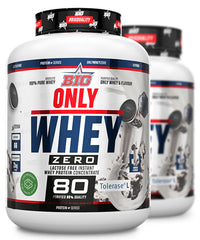
![CREABIG [Creapure®]](http://bigsupps.site/cdn/shop/products/producto_BIG_creabig_creapure_250g_0noflavour_500x600_8c48a126-a2a2-46a5-9bbd-8763ab82d768_200x.jpg?v=1757315967)
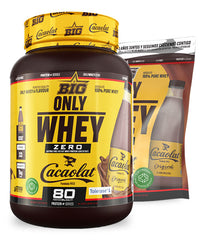
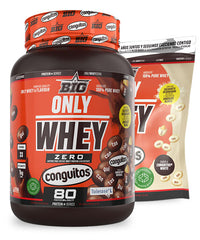
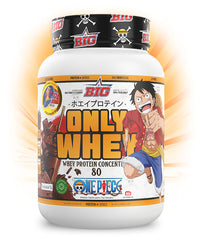
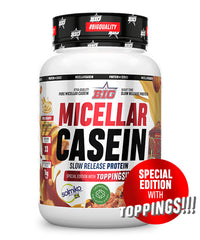
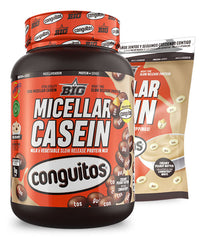
![CFM ISO ZERO [saco]](http://bigsupps.site/cdn/shop/files/producto_cfm_doypack_0noflavour_500x600a_200x.jpg?v=1750981452)
![CLEAR ISO ZERO [750g]](http://bigsupps.site/cdn/shop/files/producto_BIG_clearprotein_icepop_0noflavour_500x600a_200x.jpg?v=1757074297)
![CREABIG FIESTA® KOJAK® flavor - [250g]](http://bigsupps.site/cdn/shop/files/producto_BIG_creabig_kojak_0noflavour_500x600a_200x.jpg?v=1763548822)
